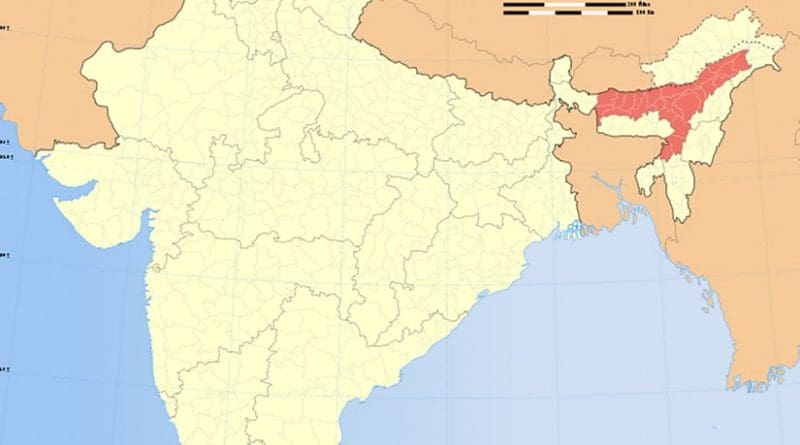The National Register Of Citizens In Assam: A Flawed Policy Process – OpEd
By Nandita Palrecha
In May 2019, a retired Indian army officer, Mohammad Sanaullah, who had served in the Indian Army for 30 years was deemed a foreigner by a Foreigners Tribunal and sent to a detention center. This Tribunal was conducted as part of the National Register for Citizens (NRC), intended to enumerate Indian citizens and limit illegal immigration to the Indian state of Assam. The NRC policy however, has shockingly few guidelines and fail safes. While Sanaullah’s ruling has been challenged in the Guwahati High Court as “arbitrary, perverse and illegal,” serious concerns about the process of the NRC remain, especially as it may be copied in other regions “affected by infiltration.”
This, however, isn’t the only major issue with the NRC. The absence of any clear policy direction on what happens to those who are excluded from NRC roles has exacerbated fears, going as far as leading individuals to commit suicide in anticipation of being declared a foreigner; as it did for 70-year-old Nirode Baran Das, who committed suicide in October of last year. Many attributed this to the depression that followed his being declared a foreigner despite his birth and years of teaching in Assam.
The NRC emerged from fears of the local Assamese, that changing demographics would make them and their language a minority in Assam. Between 1991 and 2011, the Muslim population reportedly increased from 28 % to 34 %, and there was a 7-point rise in the number of Bengali speakers. In the same period, there was a 10-point drop in the number of Assamese speakers. The increase is assumed to be the result of illegal immigration from Bangladesh. The idea of the NRC thus has been to protect the cultural identity of the Assamese by strictly scrutinizing ancestry and discouraging illegal immigration. However, with a flawed process of determining inclusion and almost no deliberation on what the future for the excluded looks like, the NRC is going to deracinate many and contribute to a human rights emergency.
In December 2014, the Supreme Court called for updating the NRC which had last been updated in 1951. Individuals were required to prove legacy, i.e. residence, or linkage to someone who was part of the 1951 NRC, or any electoral rolls until March 24, 1971 (March 25, 1971 marks the beginning of the war for liberation of East Bangladesh). Since 2014, updated drafts of the NRC, which list all those who are included, have been released at intervals, and the Supreme Court has simultaneously provided opportunities to the excluded to prove their legacy.
But this process of proving legacy has not been simple for many people. Paperwork was not a prevalent practice in the relevant time-frame, a factor that’s pronounced among landless, remote, tribal, and poor individuals and communities. Other challenges like environmental hazards present another dimension, with floods and soil erosion having led many to lose their documentation.
There is a gender dimension as well. Women from states of Bihar, West Bengal, Rajasthan, and Uttar Pradesh have married men from Assam, but may not have adequate documents to prove their legacies in their respective states of origin. Further, in the context of a general lack of paperwork, women who were married before the legal age of 18 do not have marriage certificates which prove their identity prior to marriage and the change in name that often accompanies marriage. Thus, some individuals have found themselves in the NRC drafts while other individuals from the same family have not.
Transgender people have also faced challenges: some are left with no connections to their biological families, while others appear in the NRC draft with their dead names and not their current ones.
Then emerge the political and associated communal aspects. Different communities, primarily Bengali Muslims and subsequently Bengali Hindus, have experienced higher levels of scrutiny in verification, and there are reports of biases of involved officials creeping into the data-collection and verification processes.
Even while data and documentation are a huge challenge, there is also no definite policy for those who are excluded from the NRC. Various options have been floated: repatriation to country of origin, refugee status, placement in detention centers, and Indian citizenship, but each of these has its constraints.
India does not have repatriation agreements with Bangladesh or Nepal, countries that are likely to have citizens in Assam, and Bangladesh has further stated that the NRC is an internal matter of India. Another proposed option is detention centers, but this would create a major human rights emergency. Six centers already exist in Assam, each housing approximately 1,000 persons who live in extremely inhumane conditions. In addition, the Assamese state does not have the capacity to detain an expected “tens of thousands maybe even lakhs” who cannot prove their heritage. Indian citizenship is ruled out in the short-term, as announcing citizenship for illegal residents could exacerbate violent tensions within Assam.
The process of data collection has been wrought with structural and political challenges, with little indication of a plan once the NRC is finalized on July 31. It’s important to reform the NRC given that the Indian President Ram Nath Kovind recently stated that a similar process would be carried out in other areas, and, if the experience of the NRC in Assam is anything to go by, more chaos and trauma await if nothing is done.
The views expressed in this article are those of the author alone and do not necessarily reflect Geopoliticalmonitor.com or any institutions with which the author is associated.

